After half-a-dozen visits to Italy, I can say that the Dolomites is my favorite region in Italy. It has everything I look for in a trip; endless opportunity for outdoor activities while still allowing plenty of low-key, rest and relaxation among jaw-dropping panoramas. On this post, I’ll be sharing the 3-week Dolomites itinerary that Jack and I did.
This 3 week Dolomites itinerary will take you to the best hikes, viewpoints, stunning lakes, and summits. This Italy itinerary was the reason my recent three-week trip to the Dolomites and Lake Garda one of the best trips I’d taken in a long time.
Dolomiti Brenta can be easily visited from Trento or Madonna di Campiglio
Who is this Dolomite itinerary for?
The following three-week itinerary in the Dolomites of Italy is probably best for those who prefer to be among natural sceneries rather than man-made attractions. This itinerary will take you to all of the most beautiful mountains, lakes, villages, and hikes in the Italian Alps. It stays away from Italy’s most touristed cities such as Rome, Florence, or Venice.
This itinerary is ideal for those who have a rental car. It’ll allow you to hit the trailheads early before the crowds and to get those delicious sunrise photos. But a rental car is not strictly necessary – public transportation in the Dolomites is quite efficient and hiker friendly – especially during summer months (July-August).
This Dolomite itinerary might be best for those not on a shoe-string budget. Most of the accommodations in the Dolomites consist B&Bs or garnis where the rooms run on average about $90-$100/day. With no (few?) hostels, lack of fast-food restaurants, plus the cost of rental car and cable cars, traveling in the Dolomites will cost more than in other parts of Italy.
Highlights of This 3 Week Dolomite Itinerary
Below are my favorite Dolomite experiences during my 3-week trip to the Dolomites. Use it as a guideline, because honestly I don’t think that you can go wrong with whatever you chose. If you’re ambitious enough, you can definitely squeeze a few of these in one day.
Can’t Miss Dolomite Experience:
- Best Easy Hike: Tre Cime (Cortina)*
- Work-for-it Hike: The Cross at Gardena Pass* (Colfosco/Ortisei) – go here at sunset.
- No-Effort Summit Experience: Lagazuoi* (Cortina)
- Pretty Lake: Misurina Lake (Cortina) or Lake Sorapis
- Mountain Pass: Gardena Pass* (Colfosco/Ortisei)
- Crazy Peaks: Seceda* (Ortisei)
- Dining: Rifugio La Roda (Paganella)
* Read all about the hikes here Best Scenic Day Hikes in the Dolomites
The jagged peaks of the Dolomites span the provinces of Trentino, Alto Adige, and a little of the neighbouring Veneto. This 3-week itinerary will take you through all of those 3 provinces, visiting some of the most famous spots in the Dolomites and Lake Garda (plus some off-the-beaten path ones as well).
But first, we’ll start our journey in Milan, for a day of sightseeing. Then we’ll visit Malcesine, a pretty little town by Lake Garda that’s popular with Italian and German tourists. We’ll also learn about Trento, the gateway to Dolomiti Brenta, the biggest of the Dolomites massif.
The rest of the itinerary focuses on day hikes and adventurous Dolomites activities. I want to share some of my favorite short hikes in the Dolomites, hikes such as Seceda Peaks, Val Gardena, Tre Cime di Lavaredo, and Lagazuoi.
I’ll also mention some alternative, scenic places in the Dolomites you can visit without straying too far from your car. And we’ll be driving through iconic mountain passes in the Dolomites: Passo Sella, Passo Giao, and Passo Gardena.
Let’s get started.
Day 1: Arrive in Milan, Overnight in Milan
I chose to stay in Airbnb near Milano Centrale because my flight arrived in the evening. The next day, I joined a walking tour of Milan with Frog Free Walking Tour.
During this 2.5 hour tour, run by a born-raised Milano, I learned so much. For example, I learned that Milan’s Duomo took 600 hundred years to complete (for comparison, Gaudi’s La Sagrada has only been in the works for 140 years). The length of time and the 70-plus architects that worked on the Duomo explains why it’s such a mish-mash of style. It’s a little baroque, it’s a little gothic.
Tidbits like these definitely made me appreciate Milan more than I would have walking around on my own. This is why I always recommend people to go on walking tours on their first in a new city.
Highlights of Milan
Definitely join a walking tour. Pinacoteca di Brera (10 euros) was a museum I stumbled upon by accident that I really enjoyed, the library on the ground floor was free to visit and is worth checking out. Panzerotti Luini is known for their, well, panzerottis – little deep-fried pockets of cheese and other fillings. It reminds me a bit of a calzone + donut combo.
—
Days 2-3: Malcesine, Lake Garda
Malcesine is a small resort town on eastern shore of Lake Garda in northern Italy. Its location, between Lake Garda and the massive Monte Baldo makes this a postcard-worthy town. As you approach the town, there’s no way you’ll miss the striking feature of Castello Scaligero – a historical castle in Malcesine’s pedestrianized old town. It’s been renovated and you can visit its embattlements for a great view over Lake Garda.
Top: Colorful buildings of Malcesine Bottom: The striking skyline of Malcesine in Lake Garda
Malcesine’s old town is compact and lined with cafes and restaurants, perfect for people watching over spritzes. It’s a very walkable town. Take a stroll along the the harbor in late afternoon. Bathed in golden pre-sunset light, it’s colorful and oh-so picturesque.
Highlights of Malcesine
While in Malcesine, you have to take the Monte Baldo cable car (€17). A 15 minute walk from the summit will take you to a viewpoint overlooking Lake Garda towards the town of Riva del Garda. On a clear day, it’s stunning.
Where to eat in Malcesine
Most restaurants in Malcesine have similar menus. For something different, head to Ristorante Paradiso Perduto. It’s a little hidden (the dining area is on the 3rd floor), with a peek-a-boo view of Lake Garda. Try their tagliatelle with fish ragu (with fish from Lake Garda).
Where to Stay in Malcesine
Hotel Alpino Malcesine has superb location, smack dab in the old town center. The rooms have AC, have comfortable beds, and at $85/night is a great value.
Mt. Baldo viewpoint, Malcesine
—
Day 4-6: Trento
Trento was an unexpected surprise. I didn’t know much about the city before I came and I was surprised at how likeable this city is. As the capital of Trentino province and home to a university, it’s non-touristy at all. Its bustling piazza is surrounded by pastel-colored buildings, including Casa Cazuffi-Rella with its 16th century frescoes. Trento truly comes alive in the evening when its residents and students spill onto the streets around the duomo for spritzes and aperitivos.
Trento is conveniently located as a jumping point for skiing, hiking, and mountain climbing in the Dolomites. Lake Garda lie to the south and can be visited as a daytrip. To the East is the Dolomiti Brenta and small resort villages such as Molveno and Andalo. The valley it’s in also happens to be a wine-growing region, offering plenty of wine tasting opportunities. Trento definitely deserves a spot in your Dolomite Italy itinerary.
Highlights of Trento
You can visit Castello del Buonconsiglio for its frescoes and viewpoint. When it’s really hot out, a visit to the Gorge of Ponte Alto is a good way to cool down. But what I really enjoyed the most was walking around the old town and bar-hopping during aperitivo hours. There’s some quality people watching to be had here.
Where to Stay in Trento
I stayed in a cute Airbnb apartment in old town Trento, which I highly recommend. There are lot of great value accommodation options in Trento. Find them here.
—
Day 7-10: Madonna di Campiglio
Madonna di Campiglio is an elegant, well-known ski-resort town in the Italian Alps. It’s also the main gateway to explore the Brenta, the largest of the Dolomites massifs. In the summer, it’s worth basing yourself here for a few days to hike the trails.
The trail to Rifugio Brentei is rightly popular because it’s so stunning. Along the way, stop for lunch at Rifugio Casinei – food so good even locals make the trek here to dine. Start you hike from the parking lot at Vallesinella. It takes about 30 minutes to R. Casinei, and a further 2 hours to R. Brentei.
Rifugio Brentei in Dolomiti Brenta. It’s 3 hr hike from the trailhead near Madonna di Campiglio.
Via delle Bocchette is a network connecting multiple via ferratas that provides access to the hearts of the Brenta Group. It takes 5 days to complete end-to-end and you stay in an alpine hut every night. Depending on snow level, Via delle Bocchette in its entirety might only be do-able in mid to late summer.
If you don’t have 5 days to spare, don’t worry. By choosing your starting and ending points carefully, so you can still experience Via delle Bocchette even if you only have 1 day (see map). For example, if you only have one day in Dolomiti Brenta, you can start your via ferrata at Rifugio Tuckett and exit at Rifugio Alimonta (marked “Day 2” on the map).
Considering the remote location of Dolomiti Brenta, having a guide is a good idea. Contact Mountain Friends for excursion ideas and to hire a guide.
From Madonna di Campiglio, you can take day trips to visit smaller villages such as Molveno and Andalo. Molveno is situated by a pretty alpine lake of the same name. Going paragliding over Lake Molveno was one of the highlights of my Dolomite adventure. Of course lounging around the lake is always an option. In the summer, the ski resorts in Molveno and Andalo are transformed into downhill mountain biking parks – rent a mountain bike and get ready for some adrenaline rush.
Highlights of Madonna di Campiglio
Hiking to Rifugio Brentei for its spectacular location. If you love adventures (and have the head for heights), definitely put Via delle Bocchette on your Dolomite bucket list.
Where to Stay in Madonna di Campiglio
Chalet del Sogno is a luxury hotel with traditional mountain charm (rooms from $250) that includes heated indoor pool, Turkish sauna, and an extensive breakfast buffet. The attached restaurant, Due Pini, prides itself in serving creative dishes not found anywhere else. Hotel Italo is a more affordable option (rooms start at $120) at a great location, offering a terrace and a sun deck.
Where to Eat in Madonna di Campiglio
Due Pini mentioned above. Rifugio La Roda sits on top of Paganella Mountain. The food and the view at this alpine hut are equally outstanding. Rifugio La Roda can be visited as a daytrip from Madonna di Campiglio.
—
Day 11-16: Colfosco
Colfosco is only one mountain pass away from Ortisei, but about $100/night cheaper to stay. Which was why we decided to base ourselves there instead of the more popular Ortisei. We had no regrets. Colfosco is incredibly scenic and it’s quiet enough in June that we truly felt like we were in the mountains.
Coming from Trento, the drive to Colfosco passes through Val di Fassa (Fassa Valley). We took a break from driving to go up cable car Vigo Cattinaccio to the top. We had lunch at Rifugio Bellavista and took a short hike to get closer to the impressive cirque of towers.
Alternatively, you can make a detour to see pretty Karersee (Carezza Lake). That classic Dolomite postcard of a green lake with grey, scraggly peaks in the background. Karersee is also conveniently located right by the road.
From Colfosco, there are many possible daytrip options. Jack and I visited Seceda Peaks, those peaks so popular in Instagram, as a daytrip from Colfosco. The jagged peaks of Seceda is remarkably easy to visit. From the photos I expected it to be more remote, but that’s not the case at all. The cable car starts from the town of Ortisei (make sure to buy tickets to go all the way to the top). At the top, the trail to the peaks is obvious.
View from Passo Sella or Sella Pass
A steep, but short hike from Val Gardena to the cross will get you to this amazing viewpoint.
Colfosco also makes a great base if you want to climb Piz Boe. With the aid of Sasso Pordoi cable car it’s an “easy” 1.5 hour hike to the 3000 m summit. It’s not a hard hike, but because of elevation you do need to be relatively fit. Comfort with exposure and heights is also necessary. This area around Piz Boe is called the Terrace of the Dolomites because of the 360-degree panorama at the summit. As the name suggests, it’s a pretty amazing view.
A famous via ferrata called Ferrata Brigata Tridentina al Pisciadù starts very close to Colfosco, and goes up a waterfall. It looks EPIC! Unfortunately due to late-season snow storm, it wasn’t do-able when we were there.
Highlights of Colfosco
Passo Sella and Passo Gardena easily have some of most dramatic landscapes you’ll find when visiting Dolomites, Italy. They’re convenient to visit from Colfosco. There are trails and viewpoints easily accessible from the road. We did a day hike to the cross at Passo Gardena (highly recommended, see photo above) and went climbing at Sella Towers.
Where to Stay in Colfosco
Residence Mirabelle is run by a lovely elderly lady and her daughter (rooms start from $80). The rooms are modern and huge. It’s tucked away one block from the main street so it’s very quiet, with great views from the balcony.
—
Days 16-20: Cortina d’Ampezzo
Cortina is a great base to visit the dramatic icon of the Dolomites: Tre Cime de Lavaredo. Hiking the area around Tre Cime is easily an all-day adventure. There are buses that go from Cortina to the parking lot at Tre Cime, passing Misurina Lake on the way. I recommend taking the bus during the high season because parking is limited. Also you can save the 20 euros/car toll.
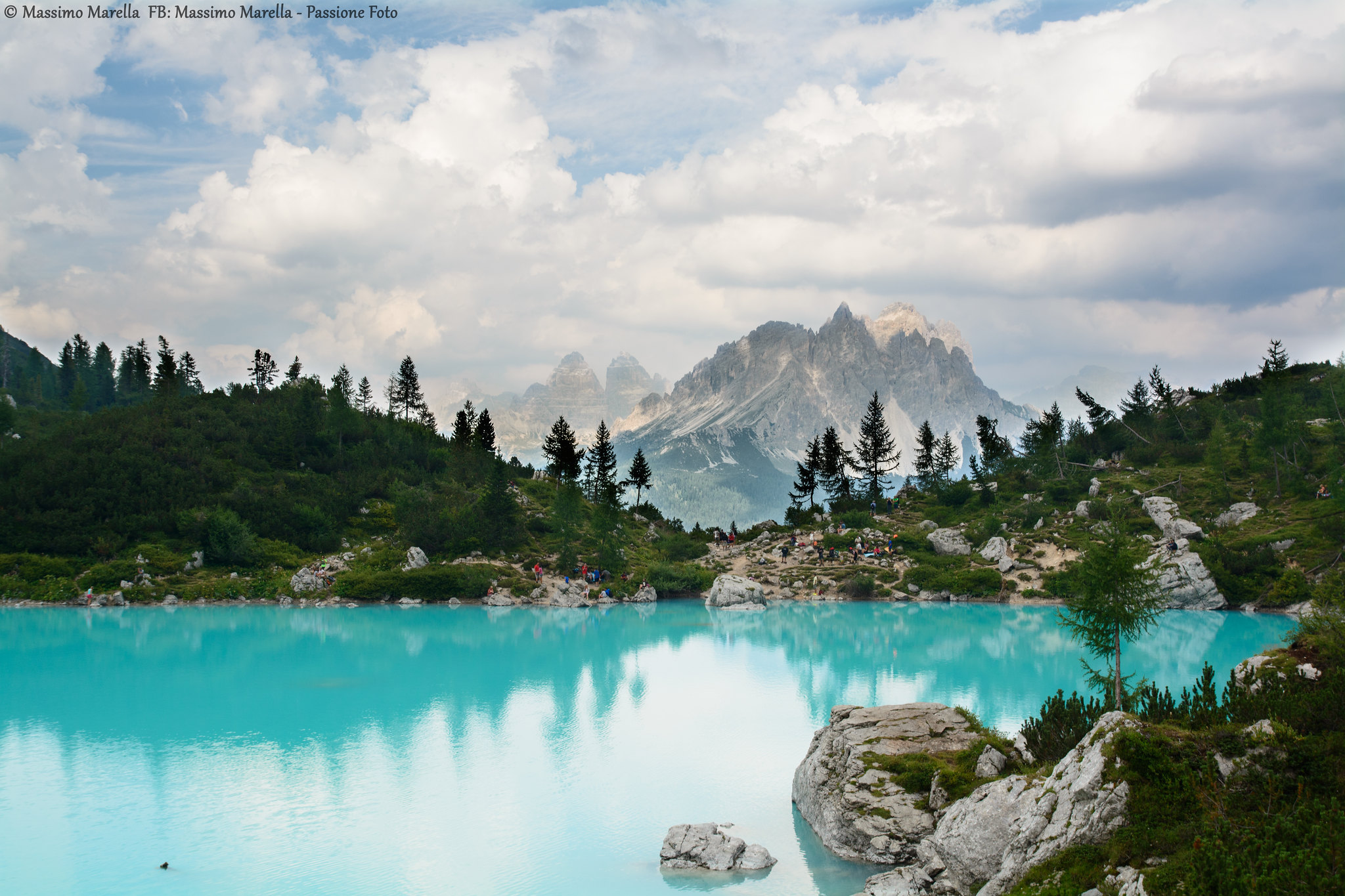
Sorapis Lake – (credit)
Tre Cime di Lavaredo, a Dolomite icon
I’d recommend that you set aside a few days in your Dolomite itinerary to base yourself here in Cortina. There are many famous Dolomite sights you could visit when you’re based in Cortina. When in Cortina, you can visit these Dolomite highlights:
- Tre Cime de Lavaredo. Like I mentioned above, it’s the icon of the Dolomites and therefore no Dolomite itinerary is complete without a visit to Tre Cime. Jack and I woke up at 3 am to climb Cima Grande, the largest of the summit. But most people come here just to hike. The main trail goes around the formation, with 3 alpine huts located along it. Dedicate 1 day for the area. It’s worth it.
- Sorapis Lake. Its amazing turqoise color reminds me of Lake Louise in Banff, Canada.
- Croda di Lago and Lago di Braies, two famous lakes in the Italian Dolomites, are also easily visited from Cortina.
- Mount Lagazuoi where you can get a superb view of the whole Dolomites region from the summit. Optional recommended activity: hike the WW1 Lagazuoi tunnels, passing reconstructed machine gun rooms, trenches, and barracks.
- Cinque Torri (5 towers) can be visited together with Lagazuoi. These striking rock formations is very popular with climbers and you’ll probably see them during your visit.
- Passo Giao. We drove through Passo Giao on our return to Trento, but we didn’t stop. It looked mighty scenic but as it was a Sunday it was also incredibly busy with cars, bicyclists, and bikers clogging every bit of open asphalt. There was no place to park at the Pass.
Where to Eat in Cortina
The restaurants in the pedestrianized parts of Cortina are ok at best, if a little overpriced. A couple of blocks away we found this cute place called Pizzeria El Bronsin that serves legit-delicious pizza and pasta for reasonable price.
Where to Stay in Cortina
Our friends who live in Austria came to join us in Cortina. We rented a 3BR apartment – Villa Casanova – that for its location and size, was a good deal at $200/night. Accommodations in Cortina can be pretty expensive. Hotel Aquila is also centrally located and highly rated ($100/night). It has a rooftop terrace and an indoor pool.
Jack in front of Misurina peaks, on the hike around Tre Cime
1-Week Dolomite Itinerary
Most people unfortunately do not have the luxury to spend 3 weeks in the Dolomites. The great thing about the Dolomites is how accessible everything is (in a way, it’s also its biggest drawback). So even when you can only go on a 1 week trip to the Dolomites, you’ll still be able to see many of the highlights. The views from simply driving across the mountain passes are stunning. Misurina Lake, Lago di Braies, and Carezza Lake are both what I’d call drive-by lakes. They’re conveniently located right next to the road.
If you have 1 week in the Dolomite, you can base yourself in 1 or 2 cities. A possible scenario is splitting your time between Cortina and either Colfosco or Ortisei. If flying into Venice, y ou can rent a car in Venice and be in Cortina in 2-3 hours.
Either way, I’d focus on a few activities you really want to do, either a specific via-ferrata or a day hike, using them as anchors for your Dolomite itinerary. Arrange the rest of the itinerary around these and everything will come into place.
Seceda Peak, accessible from Seceda gondola from the town of Ortisei
Dolomites Essentials
Tips for Visiting the Dolomites
- Gas stations often will not take American credit cards. It seems to be hit and miss. So be sure to always carry Euros.
- Watch out for shoulder season. Most towns shut down from October-December and March-April, that means restaurants and accommodations will be hard to find during this time.
- Having Internet while going on roadtrips is very useful. You can get local SIM card, but since I have Google Fi, I get cellular date on my phone in over 170 countries (try it out: use this code for $20 credit).
- It can rain in the Dolomites even in the middle of the summer. I always take a dry bag with me to protect my electronics in case I get caught in a downpour. 1L size works for my camera and phone.
Driving in the Dolomites
The Dolomites region is very compact. I can drive from Trento to Cortina in less than 3 hours. But the driving in the Dolomites is not the easiest. Forget highways. Instead you’ll be sharing these narrow lanes with a gazillion bikers/bicyclists on roads full of the craziest hairpin turns. Embrace it. Love it.
Best Time to Visit the Dolomites
June in the Dolomites seemed to be hit and miss when it came to weather. Possible late-season snowstorms will make hiking at higher-elevation tricky.
July and August are the warmest months with plenty of daylight. But also the most crowded. We heard that during these months the mountain passes would get heavily congested. This doesn’t sound like fun to me. I’ll trade less-than-ideal weather for less people. September seems like an ideal time. If I were to return (and you bet, I do), I’ll come back in September.
Getting to the Dolomites
Milan or Venice are probably going to be the best cities to start your adventures in the Dolomites. From Milan or Venice, you can take a train to Trento (transfer in Verona). Trento is on the southern edge of the Dolomites. From Trento, you can take a train or bus to other cities in the Dolomites region. Or do what we did and rent a car from Trento. It’s also possible to rent a car in Venice.
From Austria: The Dolomites is at the border between Italy and Austria. It’s about a 6 hr drive from Vienna.
—
The Dolomites is truly a special place and I’ve been dreaming of its landscape ever since.


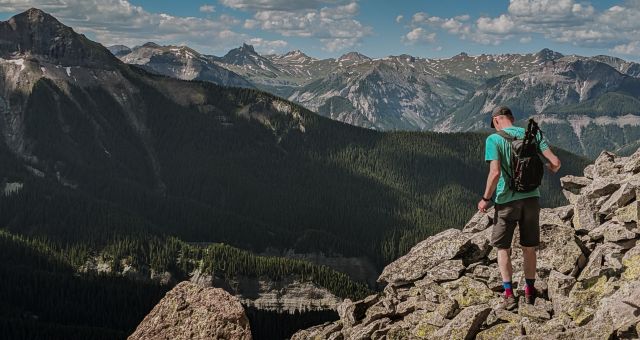
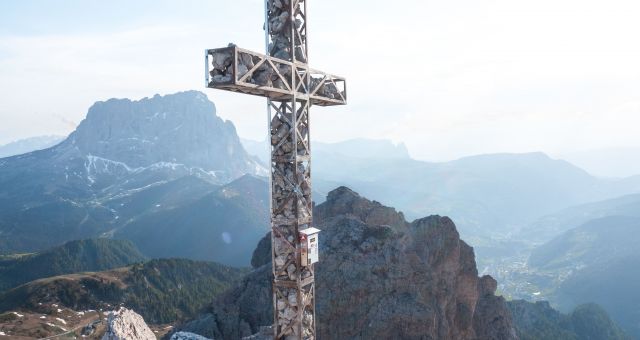
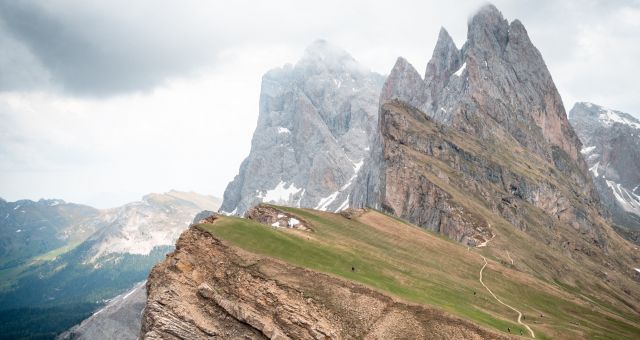
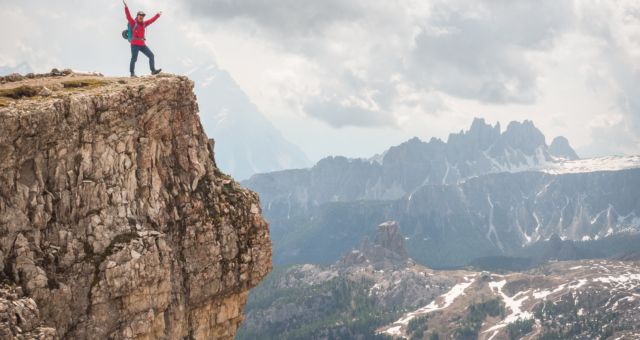
Questions and Comments
Comments are disabled. If you have any questions about the post, you can DM me on Instagram: @jacknjilltravel.